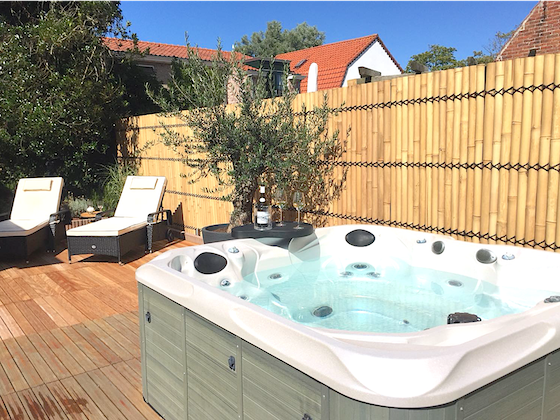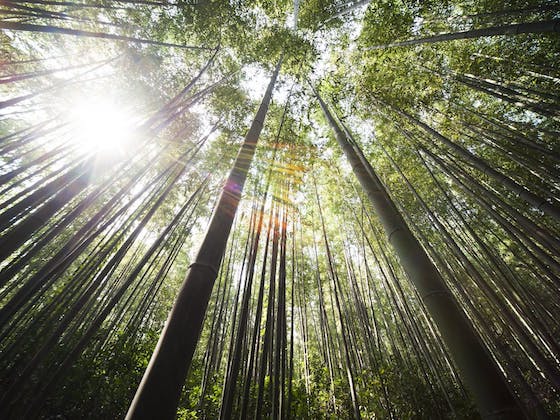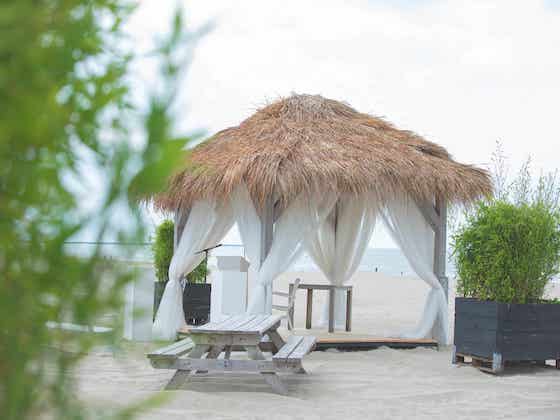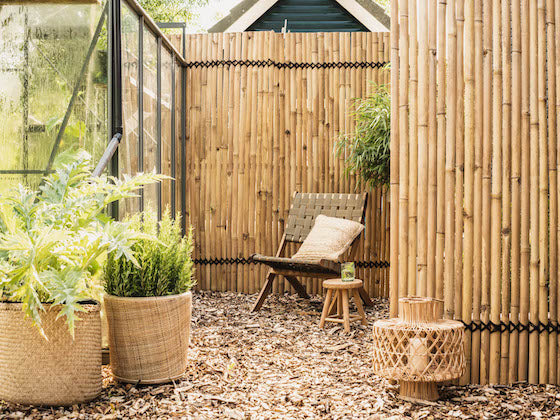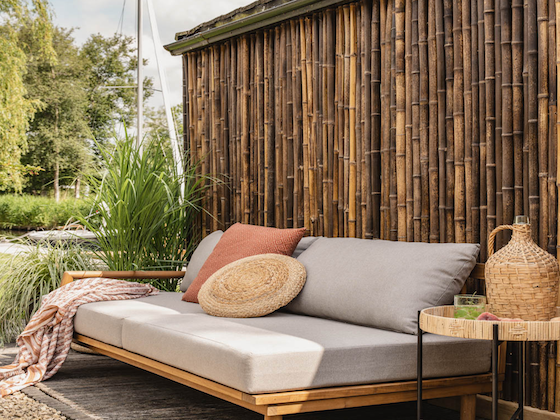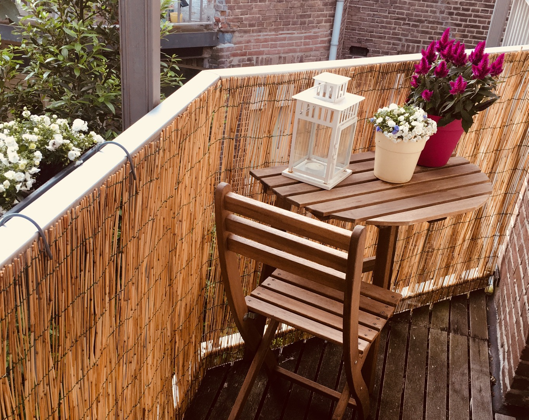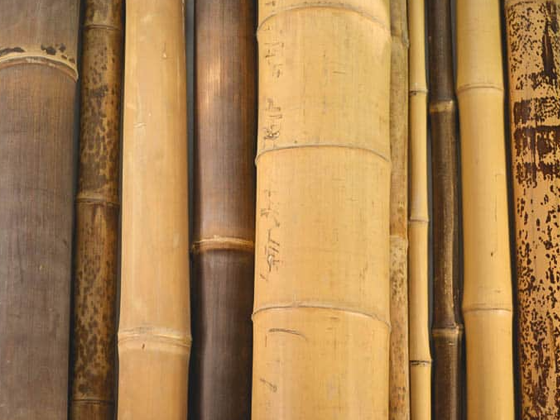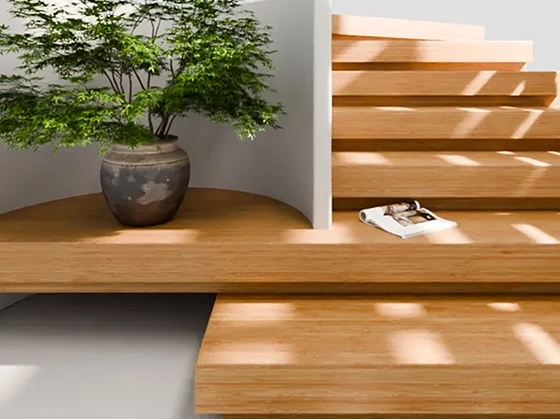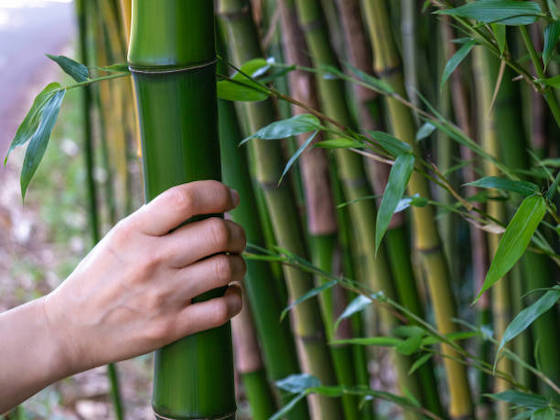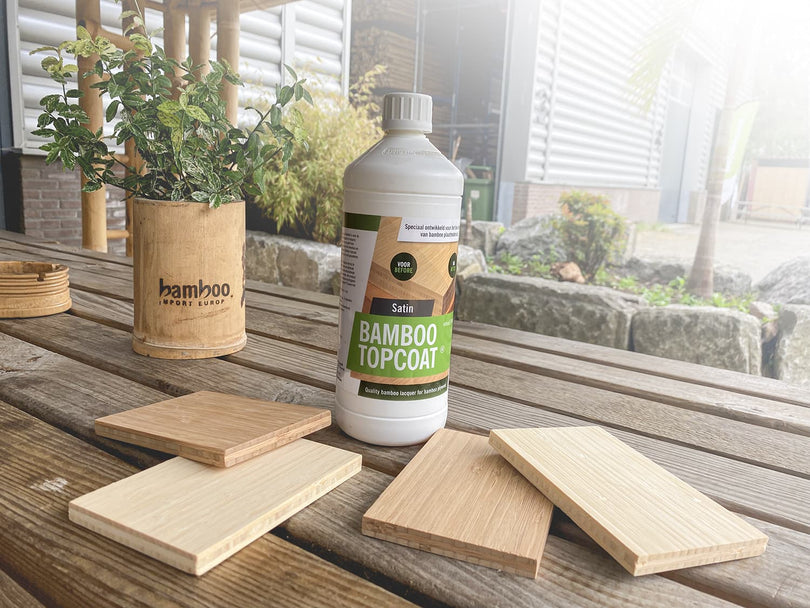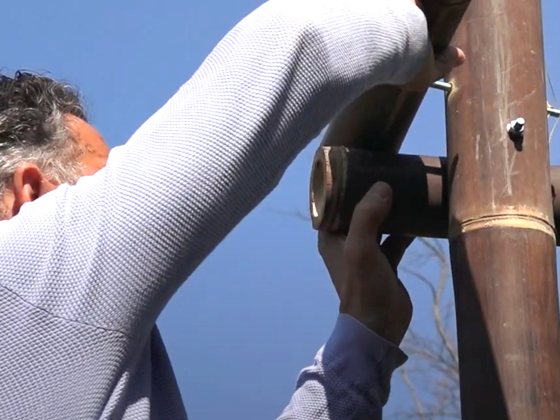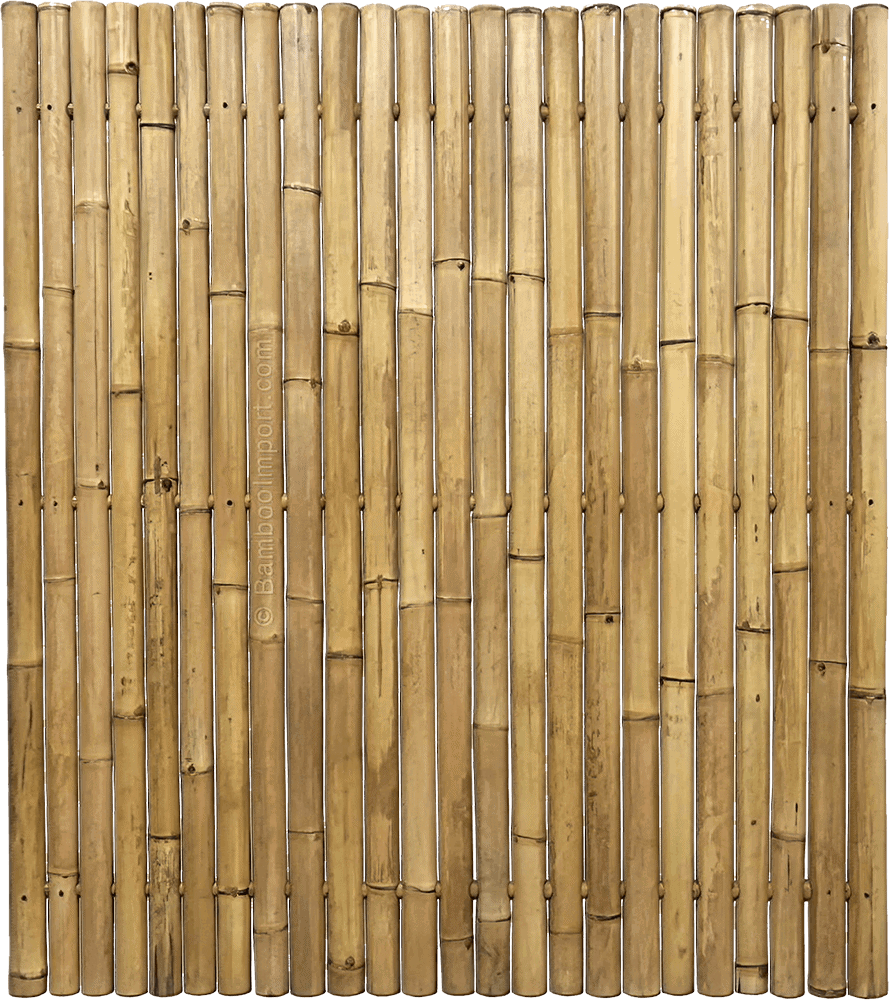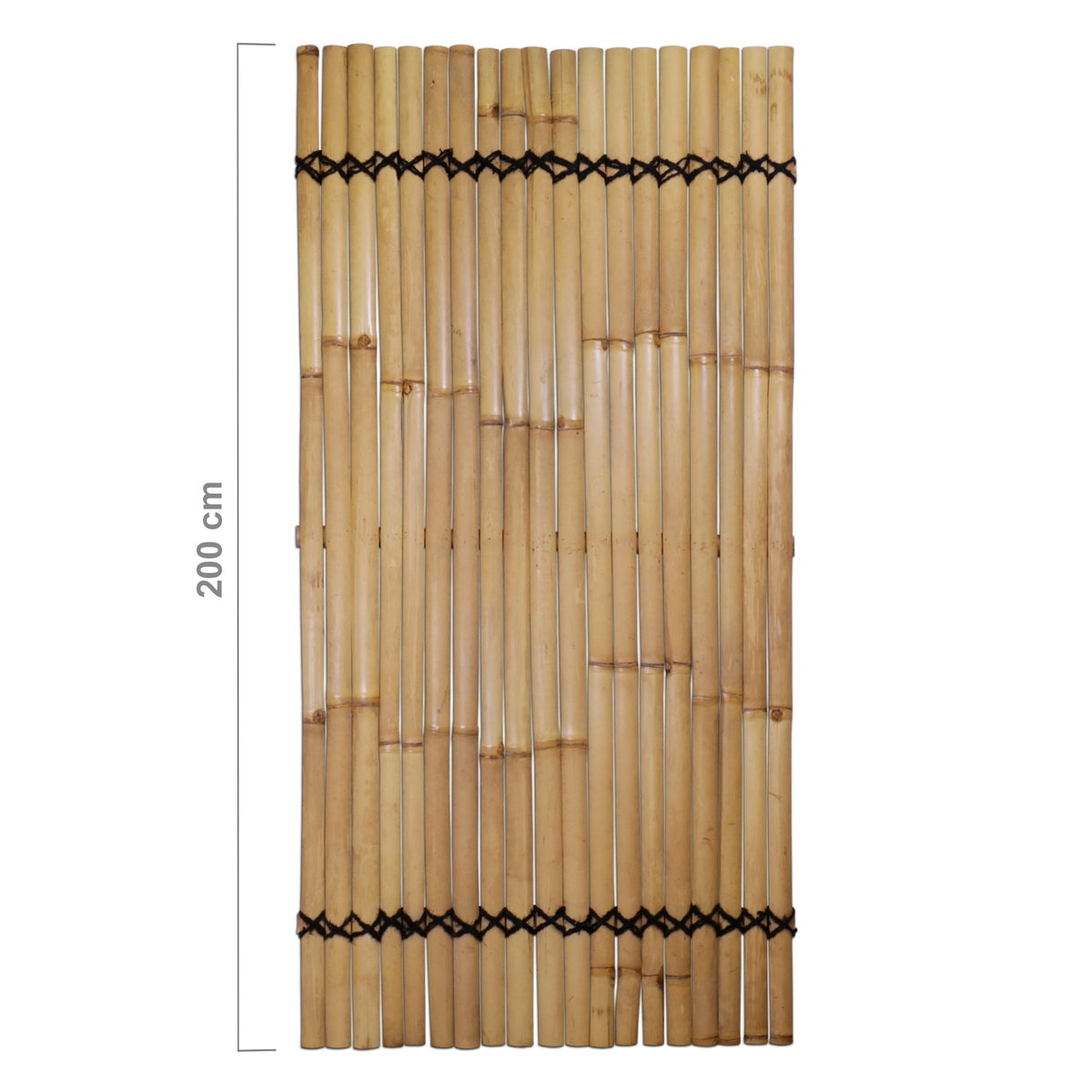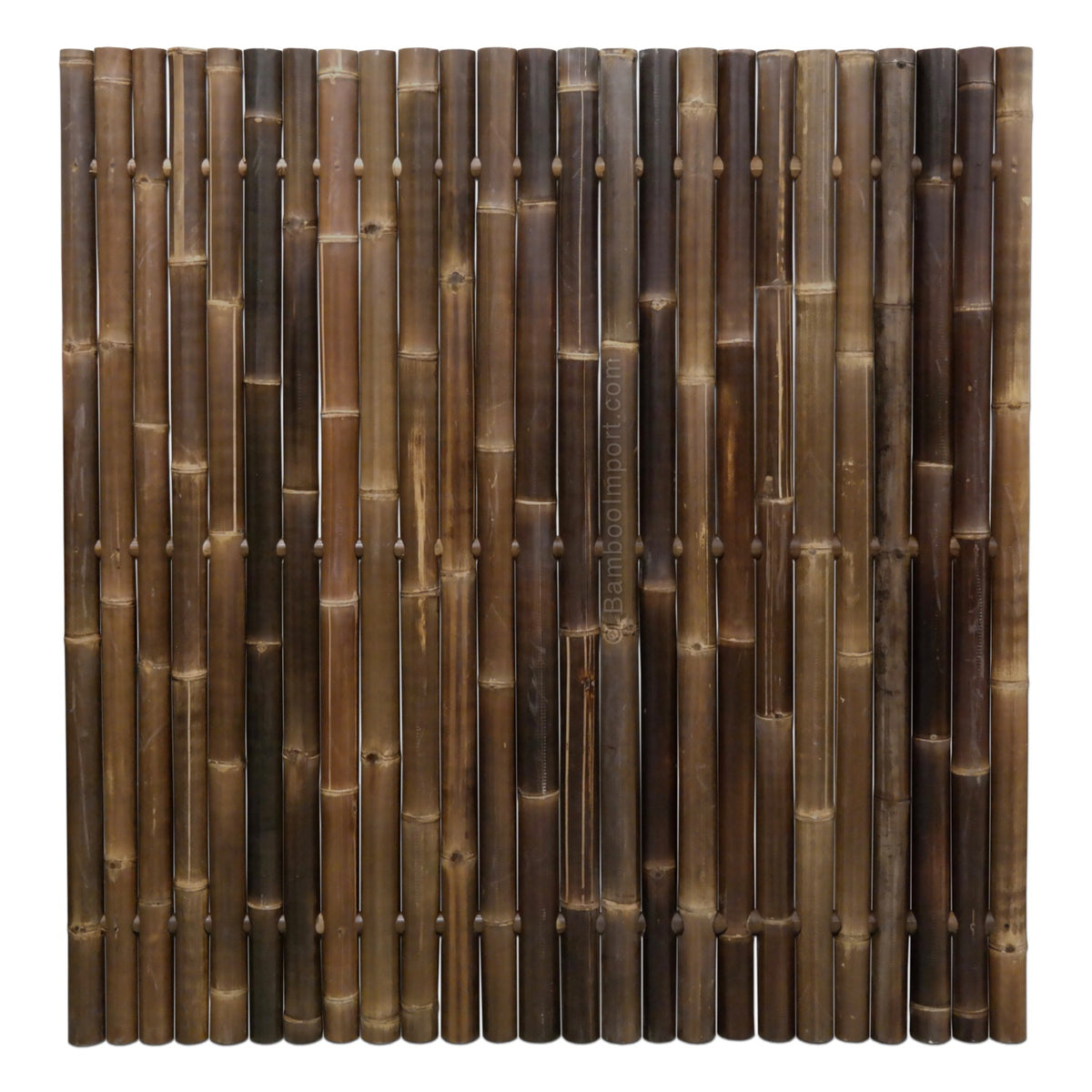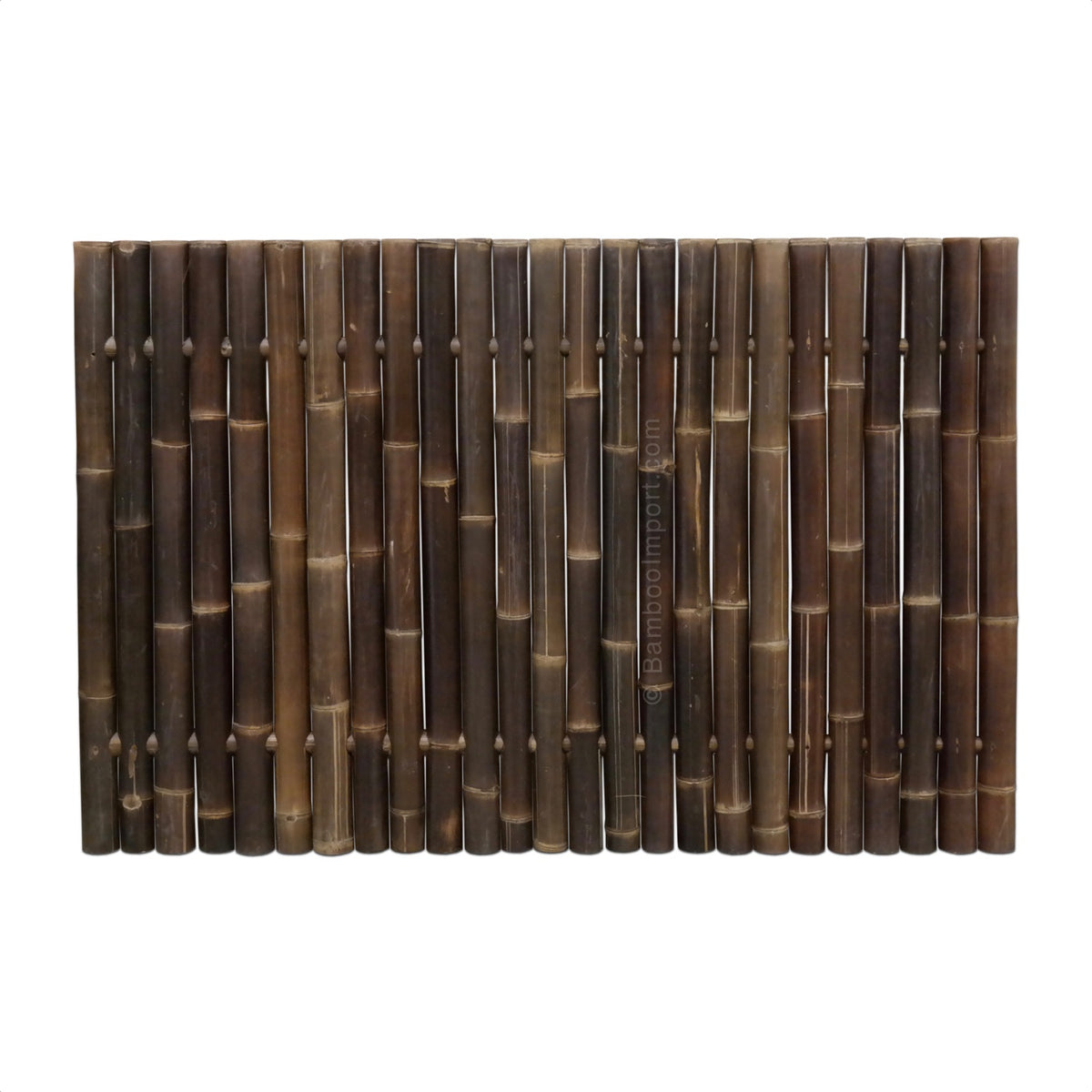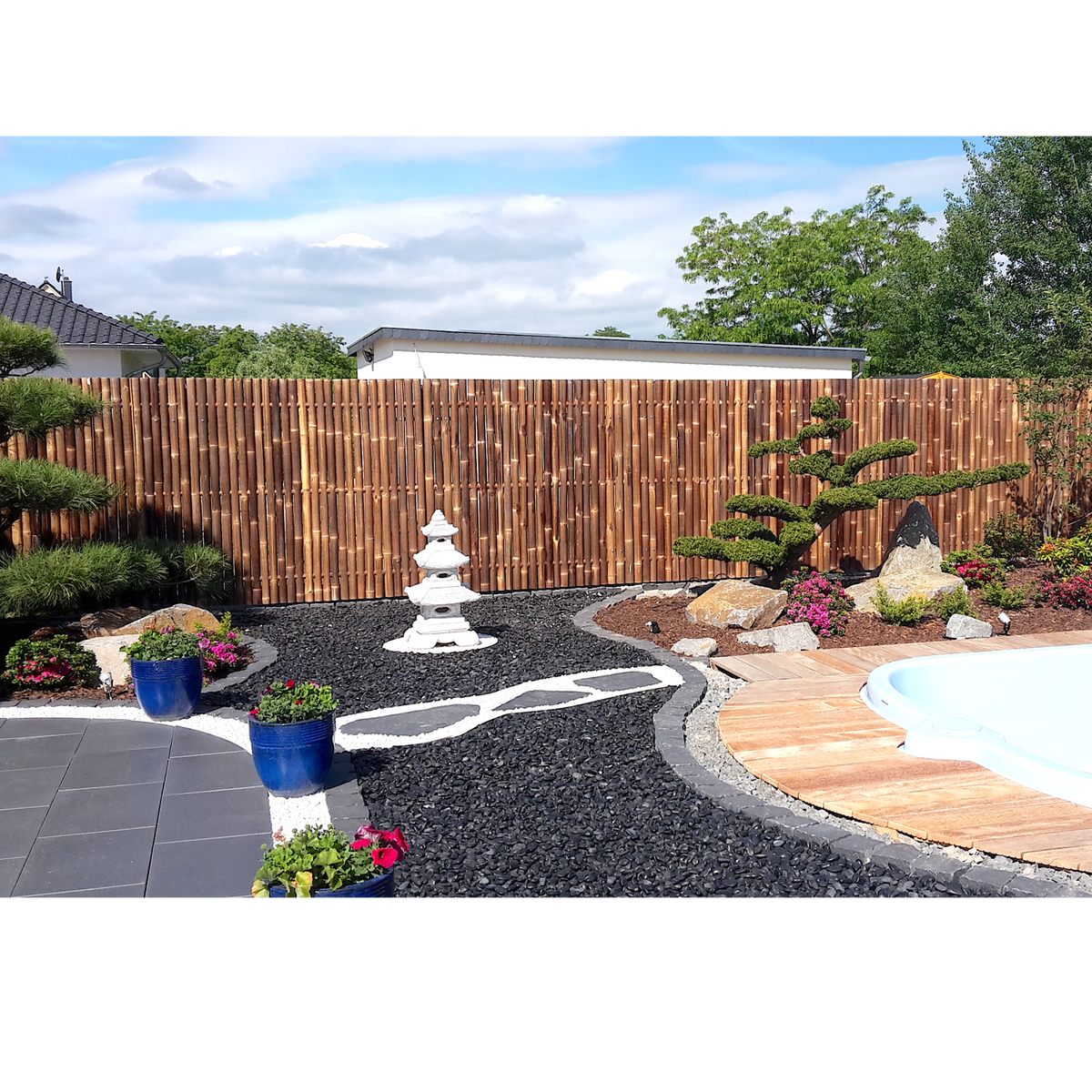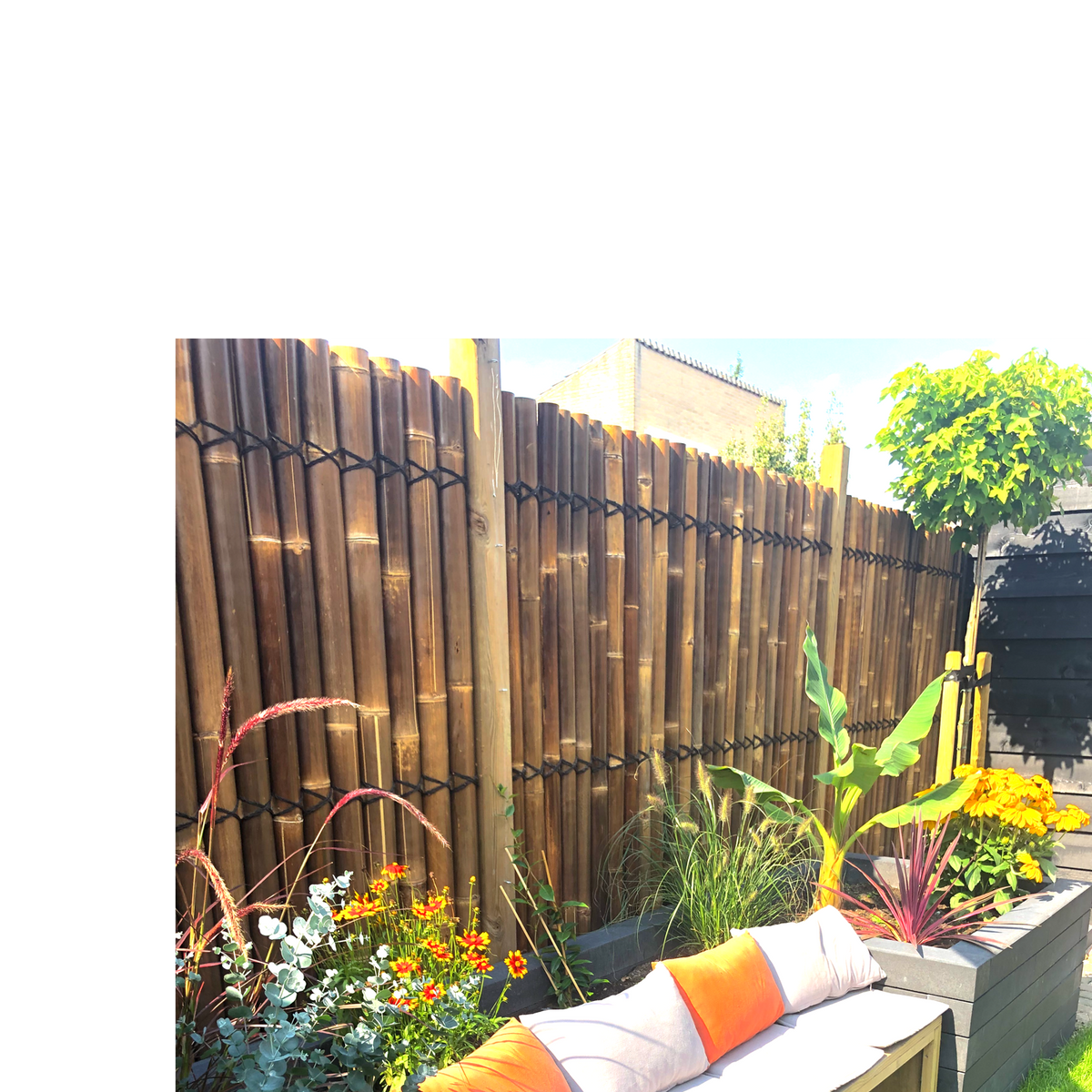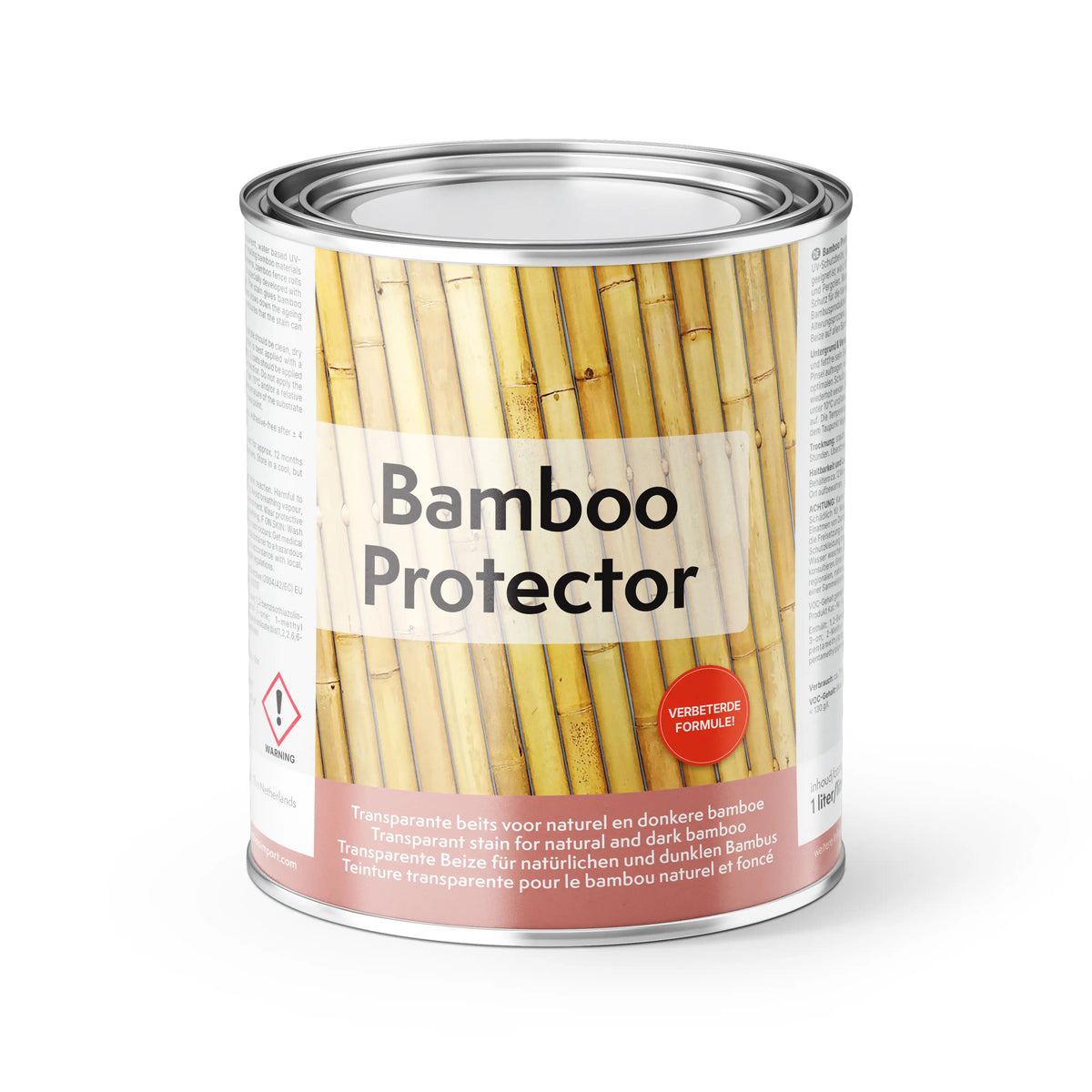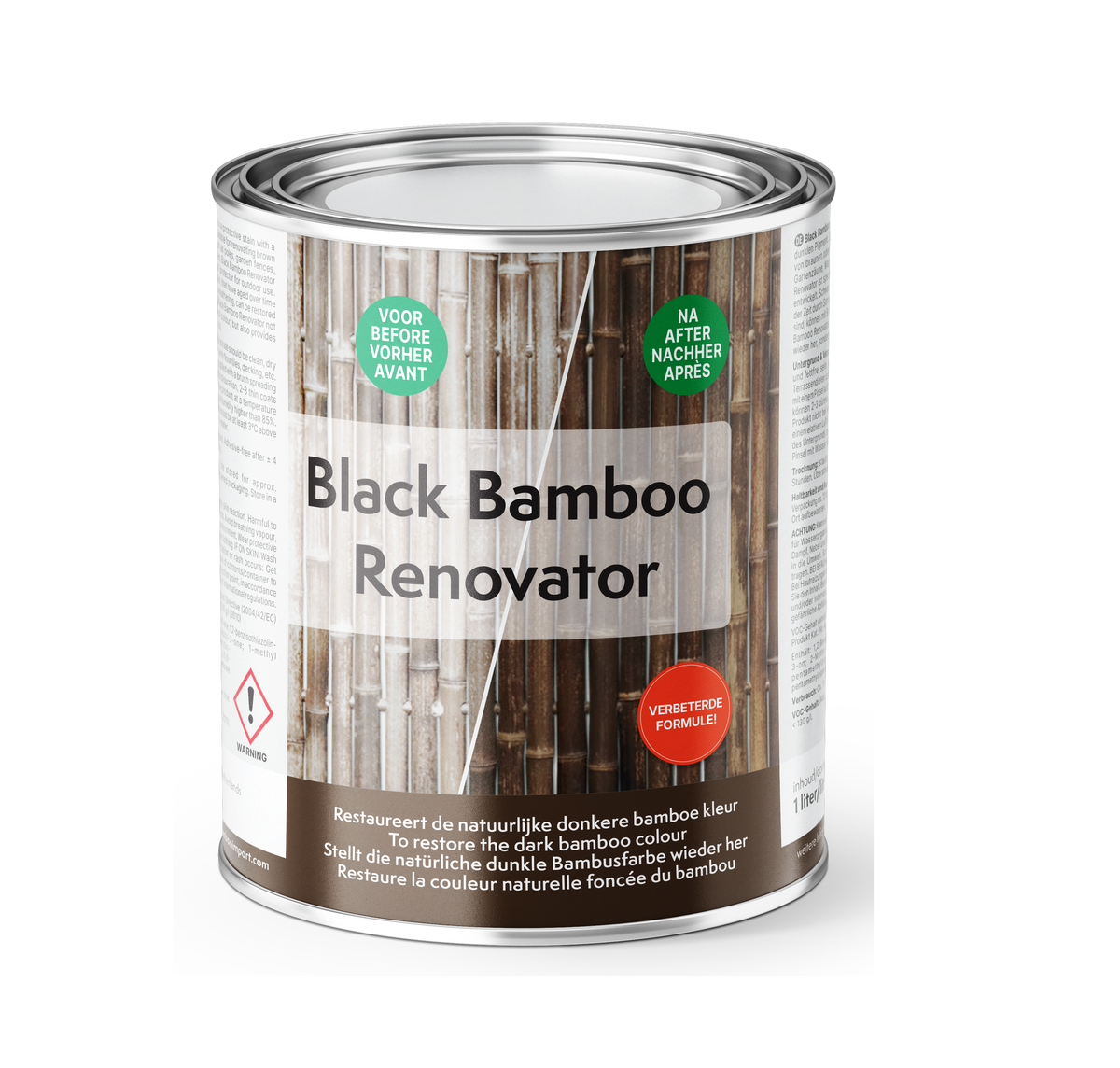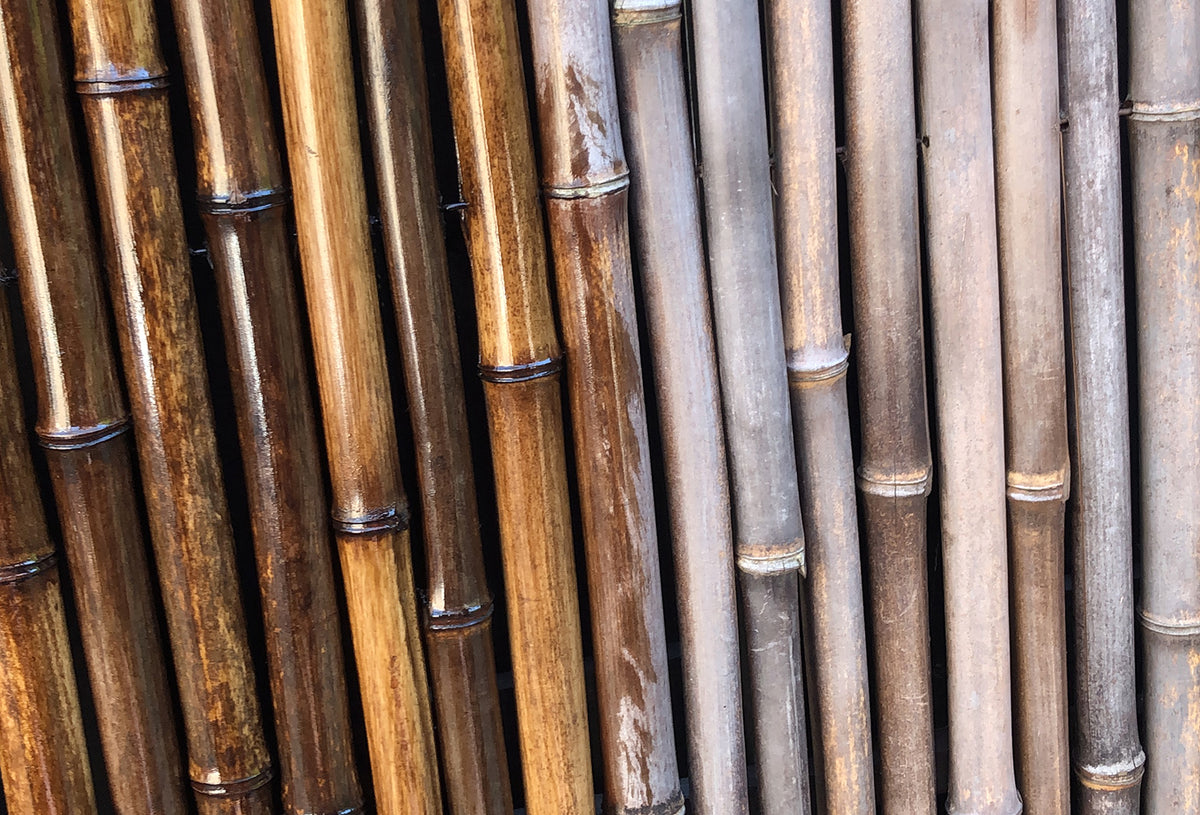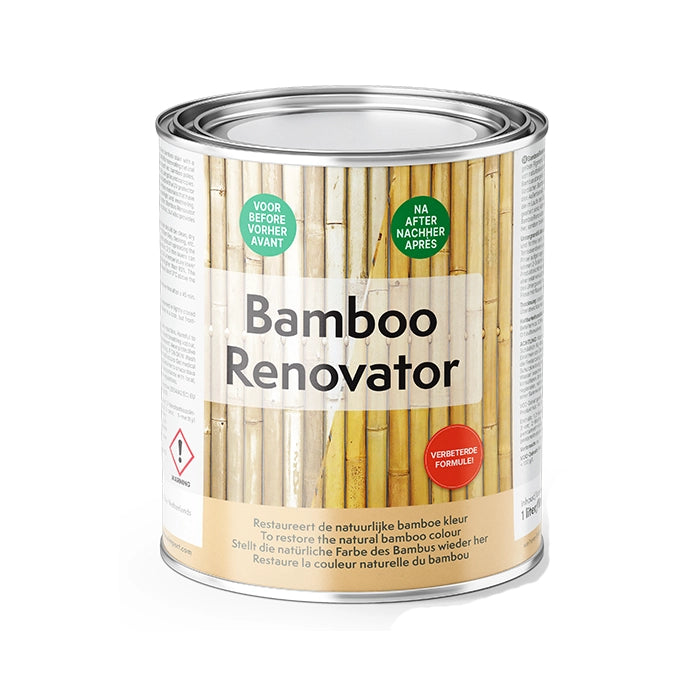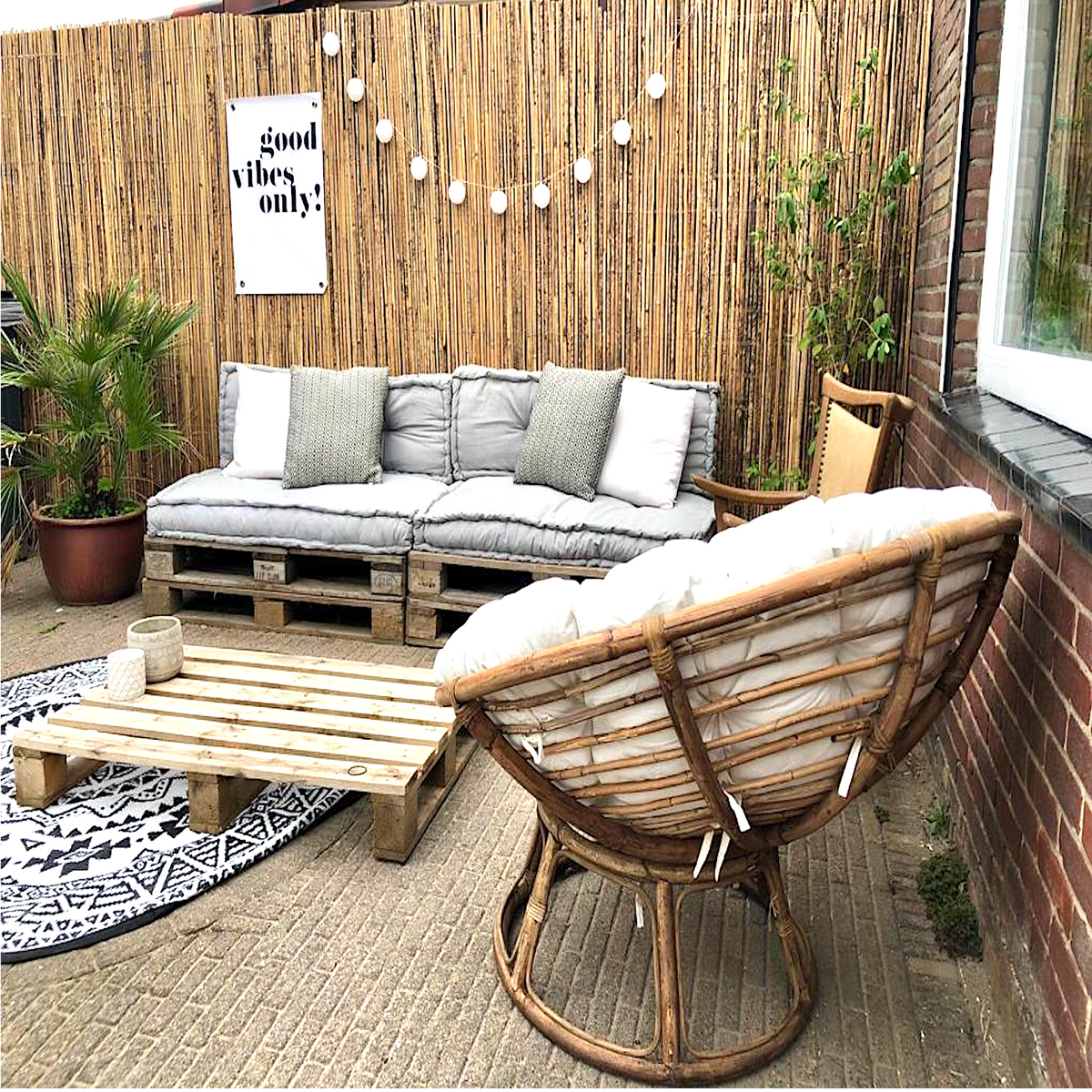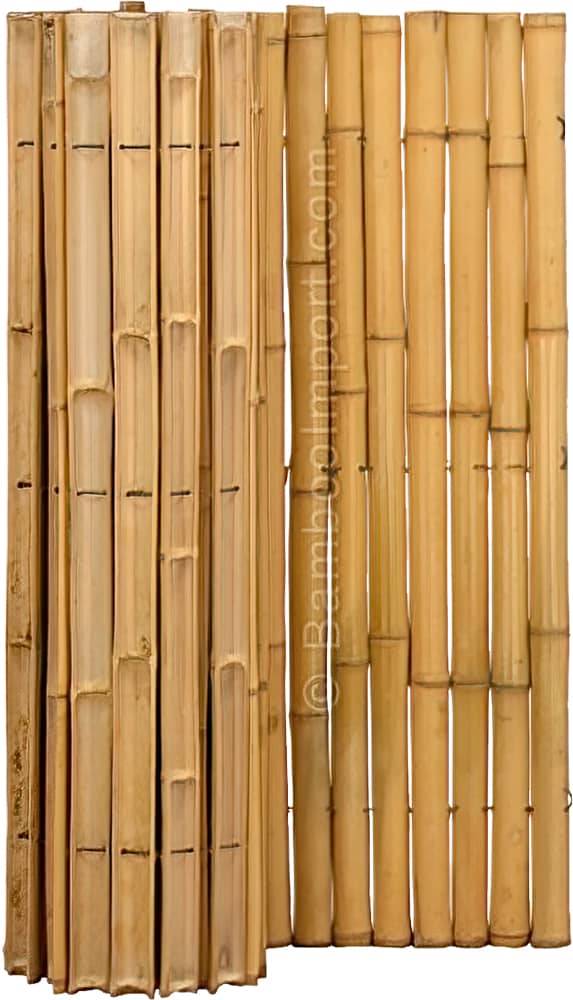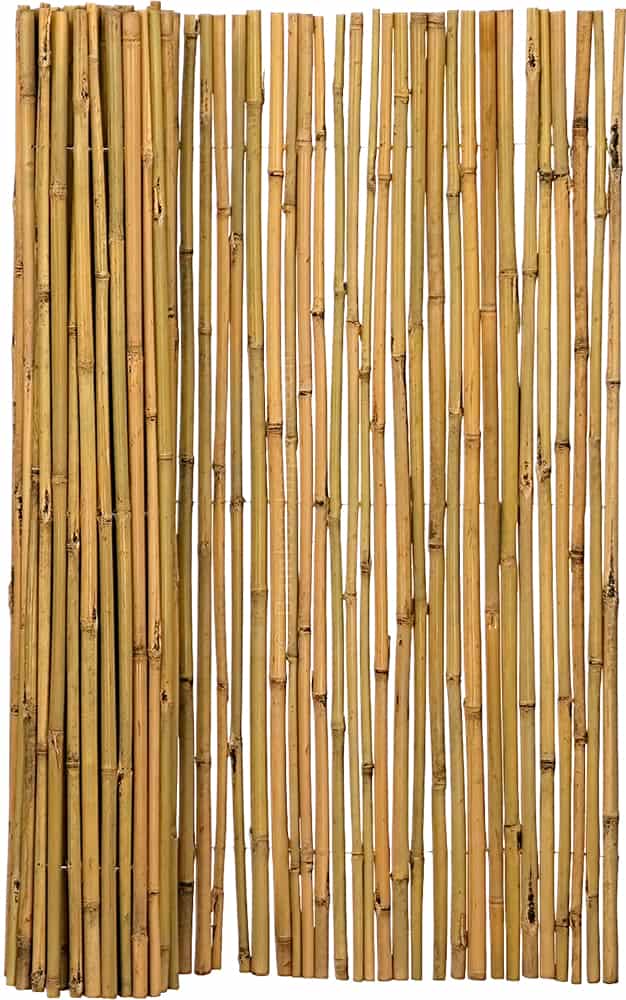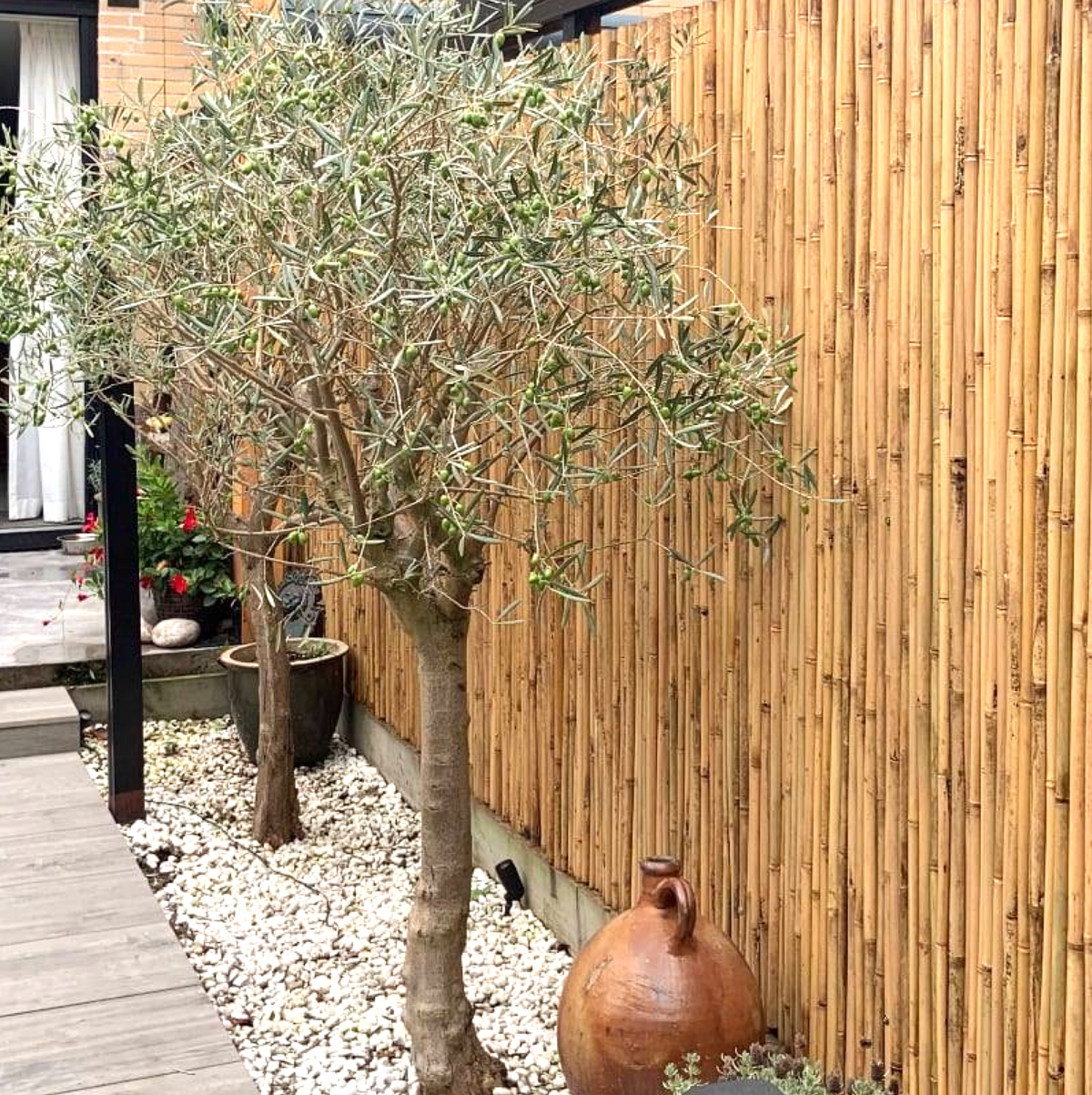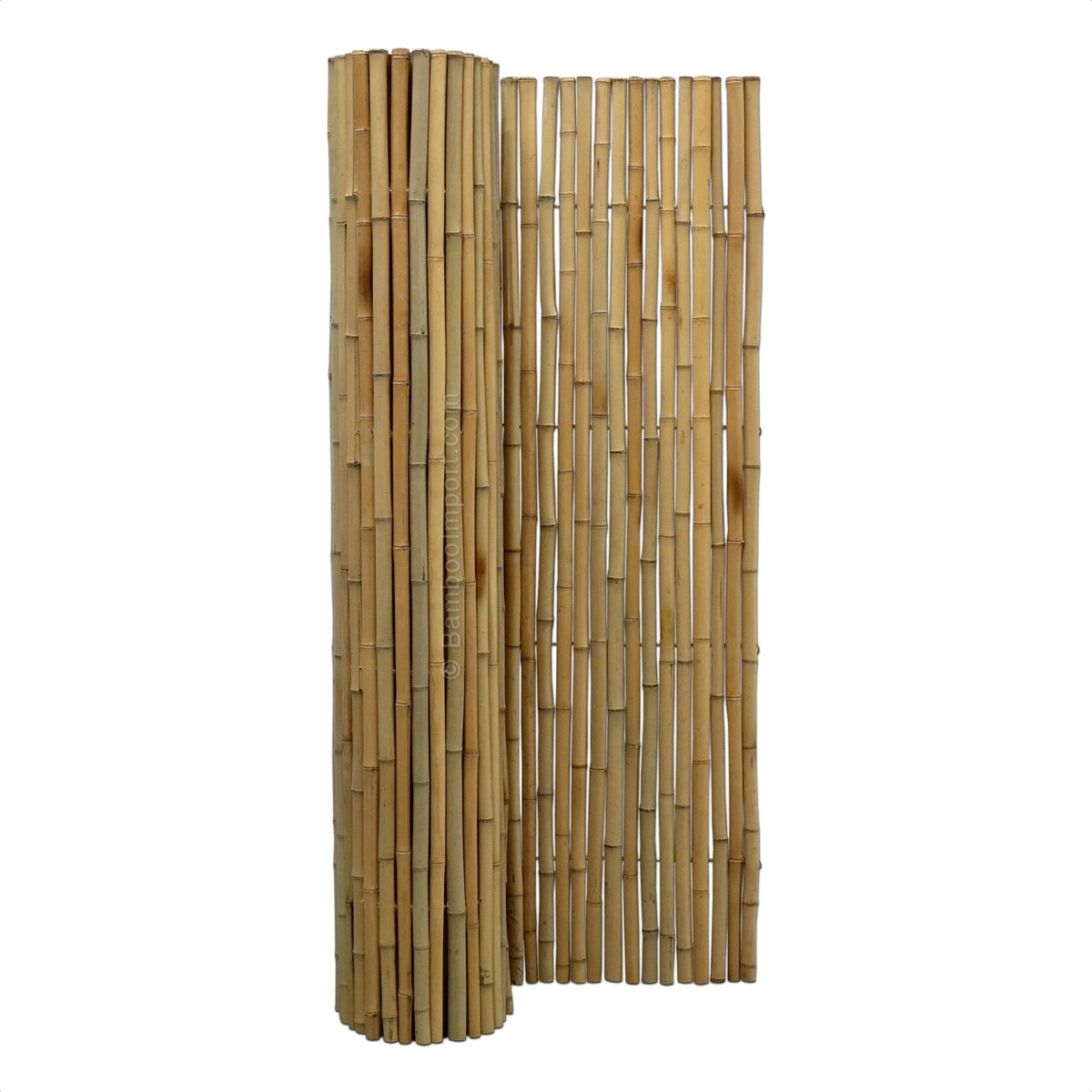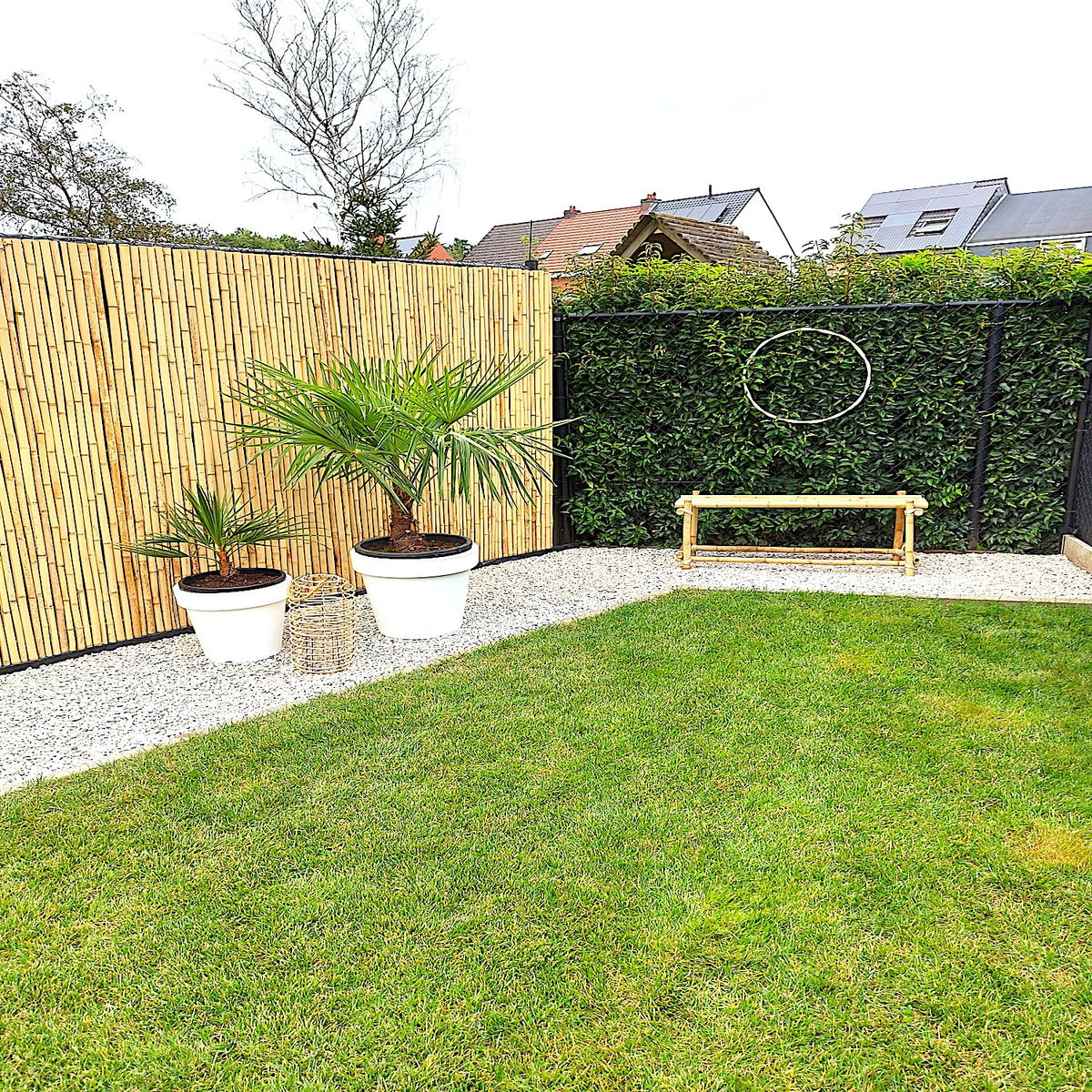Bamboo is very durable. With proper use, treatment and care, it can last a very long time. After all, there are bamboo structures that are more than 200 years old. However, it is important that the end user is properly informed so that they can enjoy bamboo products to the fullest
What is bamboo?
Bamboo belongs to the grass family. Bamboo is anatomically and morphologically very different from trees. A bamboo plant does have a trunk, branches and leaves, but that's where the comparison with trees ends. Bamboo is hollow, has no bark or growth rings, and does not thicken as the trunk ages.

Bamboo trunks grow an average of 25 cm per day and reach their maximum height in only 6 to 7 months (some tropical bamboo species grow up to 30 to 45 meters tall).
After 3 to 5 years in the field, the bamboo stems mature and are harvested, after which new bamboo shoots emerge. Because bamboo grows so quickly and does not need to be replanted after harvesting, bamboo is considered a very sustainable material.
Is Bamboo sustainable?
Bamboo does not have any natural toxins that counteract biodegradation, as is the case with some types of wood (such as teak). Therefore, the natural shelf life of unimpregnated bamboo logs is less than 2 years for most species and 4 - 7 years under ideal conditions (without exposure to rain or sun). Preservation (impregnation) of bamboo canes is therefore essential to dramatically increase their life.
The high percentage of starch in bamboo makes the material very attractive to fungi, termites and beetles. These can cause great damage during drying, storage and later use. Bamboo also contains small amounts of waxes, resins and tannins, but these are not toxic enough to increase its natural durability.

Since the natural durability of bamboo canes is low, it is necessary to impregnate the bamboo canes immediately after harvesting. For this purpose, a mixture of minerals such as borax and boric acid is usually used to treat our Bamboo Canes.
Once the natural sugars are removed from the bamboo fibers and the fibers are impregnated with salts, they become immune to insects, which immediately increases the life of the bamboo canes to 50 years or more. However, this requires that they are not used in direct contact with the sun, rain or soil.
However, for sustainable outdoor use of bamboo canes, additional care by the end user is required. This will be discussed in the last part of this article.
Why does bamboo crack?
One important characteristic of bamboo is the way the material reacts to large differences in temperature or humidity. Namely, bamboo poles can crack or burst. To understand why bamboo cracks, let's take a quick look at its anatomy.
1. Anatomy of bamboo
Bamboo is an anisotropic material, which means that its properties are completely different in the longitudinal direction than in the transverse direction. In the longitudinal direction, bamboo is composed of cellulose fibers, which are strong and stiff. In the transverse direction, bamboo consists mainly of lignin, which is soft and brittle. Therefore, bamboo is a unidirectionally reinforced composite with relatively low tangential loading capacity.
In addition, the shrinkage rate of the node is four times higher than the shrinkage rate of the internode (the hollow stem section between two nodes). This could be due to the greater amount of reinforced fibers found in the internodes but less in the nodes.
Because of the differences in anatomical structure and density, there are large differences in tangential shrinkage between the inner (10%) and outer (15%) portions of the nuchal wall. Therefore, the tangential shrinkage is higher in the outer parts of the wall than in the inner parts, which may lead to cracks.

2. Equilibrium moisture content of Bamboo
Bamboo is a hygroscopic material, which means that it absorbs and releases moisture from its environment until equilibrium is reached. Therefore, the moisture content varies depending on the characteristics of the surrounding air.
Water is stored in bamboo in two ways: free water in the cell cavities and bound water in the cell walls themselves. The moisture content of the culm wall is higher in the inner part than in the outer part. The nodes have lower values than the internodes. These differences can be as high as 25%.
During drying, the bamboo loses water unhindered until the moisture content is about 15%. The bamboo shrinks as the remaining water is displaced, but it can swell again after drying as moisture is reabsorbed from the ambient relative humidity.
Bamboo thus shrinks and swells with changes in relative humidity. Stresses caused by sudden drying and direct sunlight can then cause cracking and splitting.
Why does bamboo age?
Like all wood products used for outdoor applications, bamboo weathers/grays over time.

Weathering of exposed bamboo occurs due to the interaction of various climatic conditions, such as temperature fluctuations and relative humidity.
Repeated drying and wetting of exposed bamboo causes tiny cracks in the surface of the bamboo. UV rays, in turn, cause degradation of the cellulose layer. Finally, wind and dust particles have a sandblasting effect on the bamboo surface. The combination of all these factors causes bamboo to weather.
How do you care for bamboo for outdoor use?
Before you protect bamboo from graying and cracking, there are a few rules of thumb you should follow when laying bamboo materials:
1. Avoid contact with the ground.
To prevent rotting, it is important that bamboo does not come into direct contact with the ground. Make sure that a Bamboo Garden Screen is at least 2 inches from the ground. Burying bamboo sticks is not recommended unless they are coated with Bamboo Ground Protector.
2. Do not use nails
Due to the anatomical structure of bamboo fibers, which all run in the same longitudinal direction, nailing bamboo will cause cracking. However, Screwing is possible, provided that it is drilled beforehand.
3. Careful laying
Rough handling of bamboo by dropping it on the floor, hitting it with a hammer and the like can cause cracks. Bamboo should therefore be handled and installed with due care, preferably by experienced installers.
Protection of bamboo fences
To prevent the bamboo from graying, apply 2 coats of Bamboo Protector immediately after installation (this also helps greatly against cracks in the bamboo).
A bamboo stain should be of high quality and highly resistant to moisture and ultraviolet radiation. Such a stain or varnish contains a water-repellent preservative such as wax, kerosene or resin, and a binder that minimizes weathering, shrinkage and swelling. Bamboo Protector is a stain that we have developed specifically to protect your bamboo materials.
Bamboo Protector should be applied to the bamboo surface as well as the nodes at the top of a bamboo screen. This creates a seal that prevents the bamboo fibers from absorbing moisture, and reduces the ratio and rate of moisture exchange.

For optimal protection, apply Bamboo Protector annually or semi-annually (depending on climatic conditions). This will guarantee the life of your bamboo products. With proper care and installation, the life of a bamboo fence can average 15 to 20 years.
Spring Cleaning
In the fall, everything outside gets a little damp and gray. This is also true for bamboo, even if you have treated the bamboo with Bamboo Booster or Bamboo Protector, this risk will remain. This natural feature cannot be avoided, and just like the rest of the garden, bamboo needs a spring cleaning.
Clean the bamboo with a pressure washer. If it is very dirty, you can first spray the screens with bamboo cleaner and then clean it thoroughly with water. After cleaning, the bamboo will immediately look much better. Yellow (natural) bamboo has some dark, orange stains. These dark spots are caused by moisture and will dry naturally as the temperature rises or the sun shines on the bamboo. Once the bamboo is completely dry, you can apply a new coat of Bamboo Booster or Bamboo Protector on a nice day.
If you have a bamboo fence that is already grayed out, you can also restore it. To do this, first clean the bamboo with Bamboo Cleaner and then hose it down with a garden hose or pressure washer. Once it's clean, let it dry and then apply Bamboo Protector.
For more information on our special Bamboo Care products, see the description of each product.

